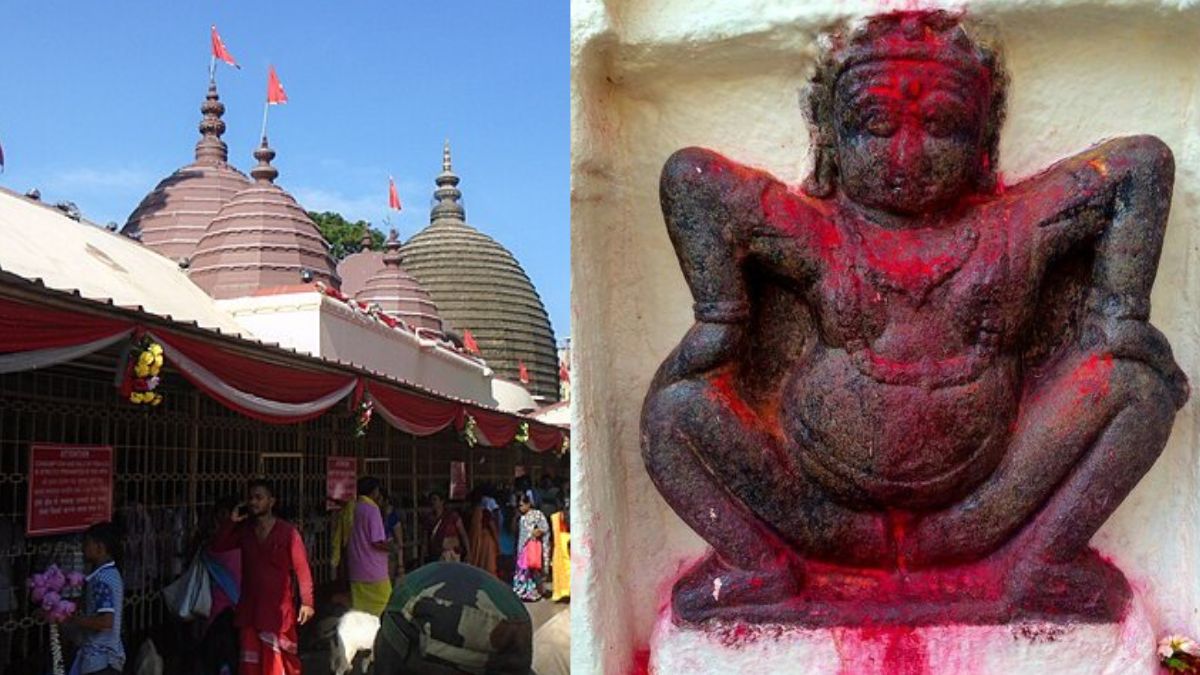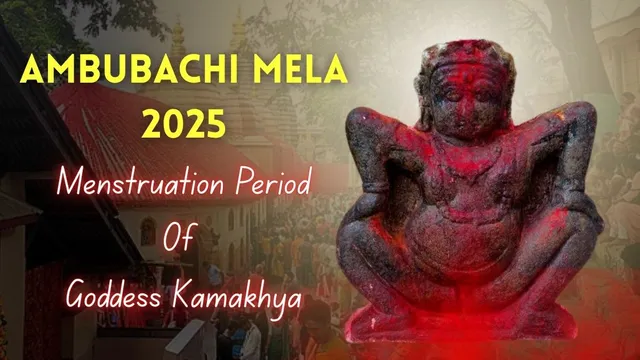- By Kashish Rai
- Fri, 20 Jun 2025 11:07 AM (IST)
- Source:JND
Ambubachi Mela 2025: At Kamakhya Temple in Guwahati, Assam, the Ambubachi Mela is a vibrant yearly event honouring the goddess's menstrual cycle. The Brahmaputra River turns red during the monsoon season, signifying the goddess's yearly menstruation. Devi Kamakhya, the Mother Shakti, and her ability to give life are honoured in this special festival. Devotees eagerly anticipate the temple's reopening after it is closed for three days. The Ambubachi Mela, which draws thousands of devotees seeking blessings and spiritual renewal, is evidence of the cultural significance of femininity and fertility in Hinduism. This year, the significant Ambubachi Mela is set to begin on 22nd June 2025.
Check out all the significant information about the start and end date, significance and rituals associated with this event below:
Ambubachi Mela 2025: Start And End Date
Ambubachi Mela 2025 Start Date: 22nd June 2025, Sunday
Ambubachi Mela 2025 End Date: 26th June 2025, Thursday
Key Timings And Details Of The Ambubachi Mela:
- Pravritti (Start of Mela): The Ambubachi Mela begins on June 22, 2025, at 2:56 PM IST, marking the start of Goddess Kamakhya's annual menstruation period, and the temple doors close to devotees.
- Temple Closure: The temple remains closed from June 22 to June 25, 2025, symbolising the goddess's seclusion, with no worship, darshan or entry into the sanctum sanctorum permitted.
- Nibritti (End of Menstruation Period): The menstruation period ends on June 26, 2025, at 3:19 AM IST, followed by a ritualistic purification (Snan) to mark the goddess's return to her divine form.
- Temple Reopening: The temple reopens on June 26, 2025, from 6:00 AM IST, allowing devotees to offer prayers and receive prasad, including the auspicious cloth, after the ritualistic bath and daily puja.
- Festival Conclusion: The Ambubachi Mela concludes on June 26, 2025, with grand celebrations, special pujas, prasad distribution, and Tantric rituals, marking the end of the festival and the goddess's return to her divine state.

Goddess Kamakhya is believed to undergo menstruation for 3 days during the Ashadha month, which is celebrated as Ambubachi Mela. (Image Source: Wikimedia Commons)
Ambubachi Mela 2025: Significance Of The Menstruation Period Of Goddess Kamakhya Devi
Mother Earth's "menses," which stand for fertility and life-giving energy, are celebrated for their creative and nurturing abilities at the Ambubachi Mela. According to devotees, this potent energy becomes available at the Kamakhya Temple site during the monsoon rains. The influence of the Tantric Shakti cult in eastern India is demonstrated by the worship of the presiding deity as a yoni-like stone that is drenched by a natural spring. Tantric Babas are drawn to this special celebration and emerge from seclusion to participate in the ceremonies, which heighten the mela's spiritual significance and mystique.
Ambubachi Mela 2025: Rituals Associated With the Menstruation Period Of Goddess Kamakhya Devi
During the Ambubachi Mela, the Kamakhya Devi temple remains closed for 3 days, symbolising Goddess Kamakhya's menstrual seclusion. Devotees observe a number of rules during this time, including abstaining from farming, cooking, worship, and reading sacred texts. Devotees of the divine goddess focus on spiritual devotion and introspection during this break from everyday life.
The goddess is bathed and undergoes rites to re-establish her divine form following the three-day seclusion. Prasad is given to the devotees as the temple doors reopen. There are two types of prasad: Angabastra, a piece of red cloth that is used to cover the yoni rock fissure during the goddess's menstruation, and Angodak, which is spring water. These sacrifices are regarded as extremely sacred and are thought to bestow blessings on their recipients. These sacred clothes turn red, as they are believed to have absorbed the Goddess Kamakhya’s menstrual blood, which is considered highly sacred.
Millions of pilgrims, including sadhus, householders, and foreigners, travel from all over India and beyond to attend the Ambubachi Mela. For devotees, the festival offers a singular and profound experience as it honours the divine feminine and the earth's capacity to sustain life. Following the festival's conclusion on the fourth day, worship of Goddess Kamakhya is resumed with great zeal, and clothes, utensils, and household items are cleaned and purified using sacred waters. Devotees eagerly seek Mother Kamakhya's blessings, as the entrance to the shrine is regarded as auspicious.
(Disclaimer: This content includes advice providing generic information only. It is in no way a substitute for qualified spiritual or astrological opinion. Always consult a specialist for more information before adopting any measures.)

